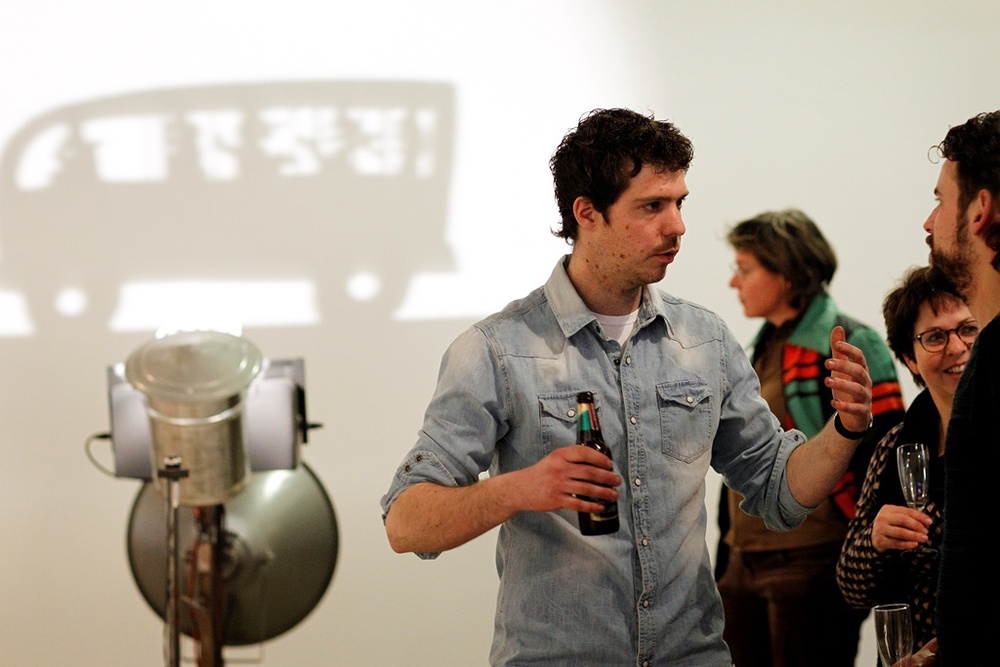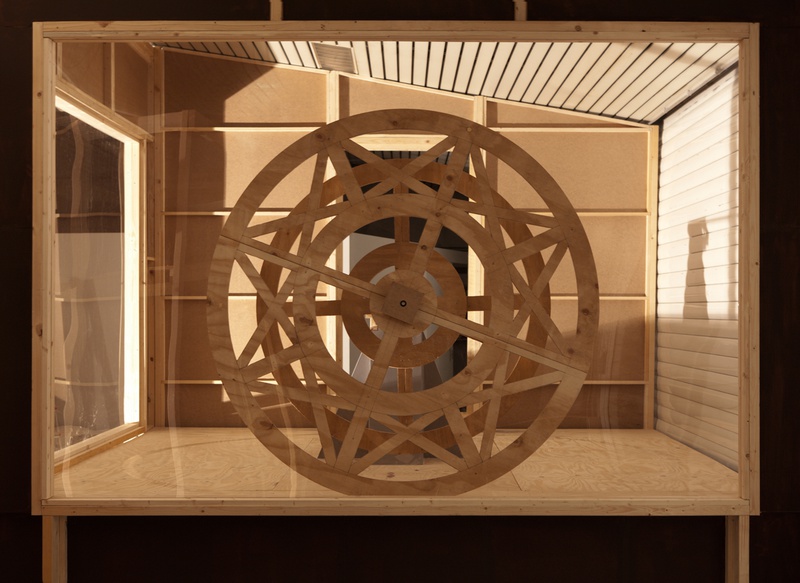Tim Hoefnagels builds large kinetic constructions from raw materials such as wood, whereby a role is played by humour. Technology and work are also always visible: the structures are highly reminiscent of maquettes or models. The large installations and devices emphasise the space in which they are placed: they seem either to be bursting at the seams or to be shrinking. The autonomously moving installations remain unaffected by the spectators.
Hoefnagels’ website displays the deconstructivist message ‘respect for the logic of the material.’ He intuitively follows the limitations and possibilities of the chosen material. These he encounters automatically as he translates an as yet abstract idea into a concrete object. Hoefnagels regards any limitations as an advantage: only a number of solutions are possible, so choosing is easier. Hoefnagels is always coming to compromises with the material, in order to come as close as possible to the original concept.
The underlying mechanisms of his constructions are always visible in the final result. This is where the maker’s identity always emerges: it reveals his own fascination with the process of creation. Despite this ‘practical’ veneer, the works of art still inspire wonder. They are based not on usability, or functionality, but on the idea of a perpetuum mobile: every movement perpetuates itself. A circle or a wheel refers to the idea of things that continually return to their origin.


